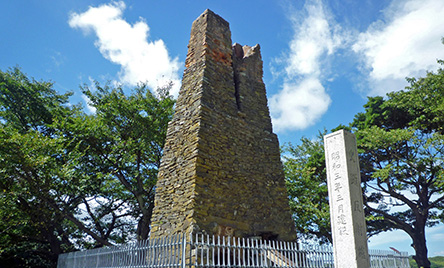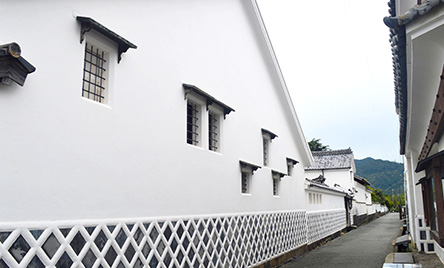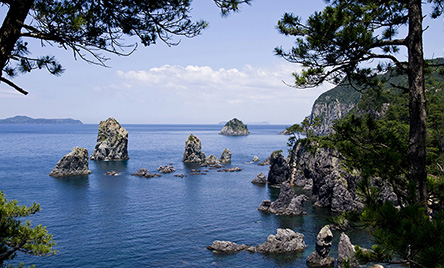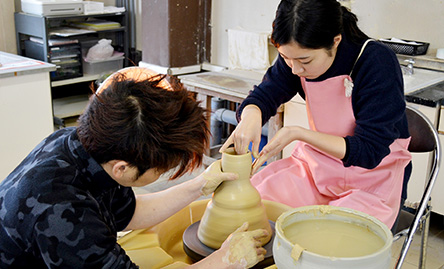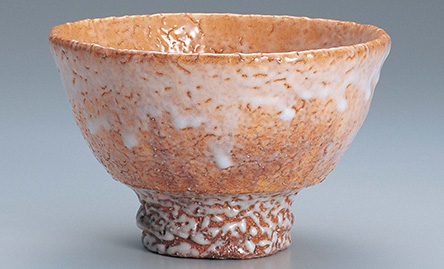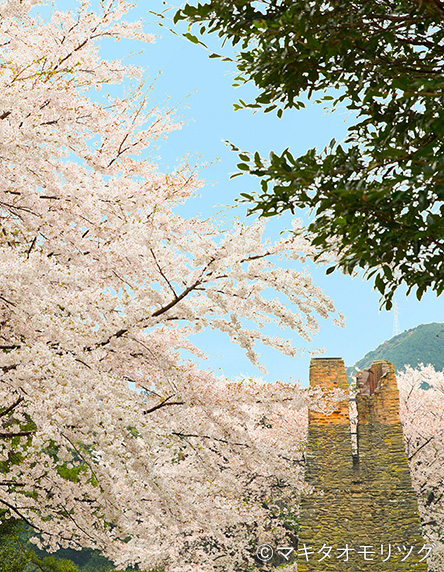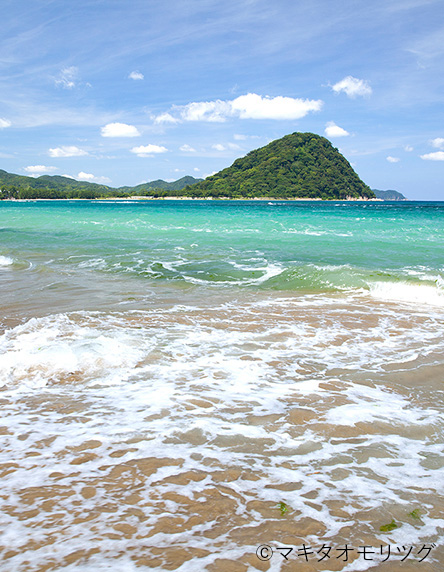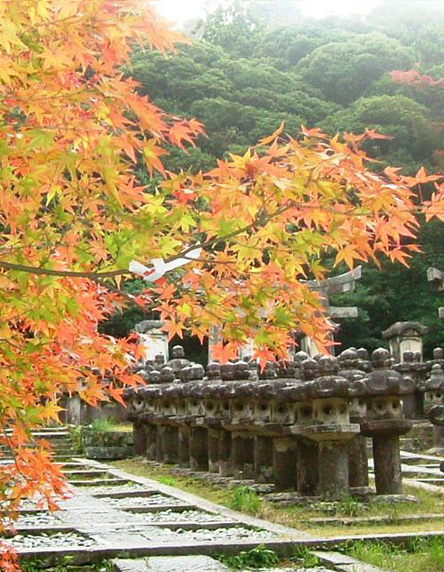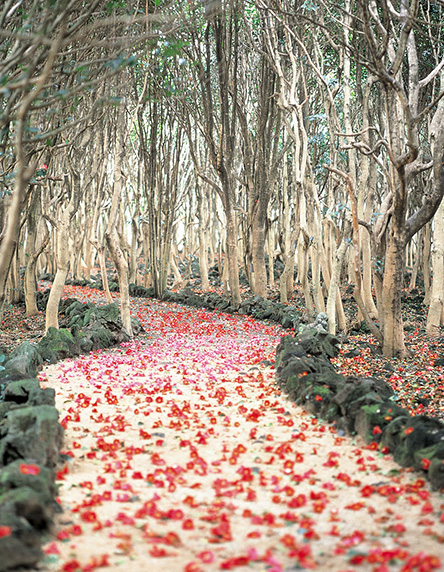Promenade in a forest of camellias
Camellias (tsubaki) have long held a place in Japan’s history and culture. They are mentioned in some of the earliest Japanese literature, including the Nihon shoki (Chronicles of Japan) and the Man’yōshū, an ancient anthology of poetry.
Beginning in the Meiji era (1868–1912) the forest at the foot of Mt. Kasayama was repeatedly cut down for fuel, and by the middle of the twentieth century, the land had become overgrown with shrubbery and was unusable. However, in the 1970s, the city of Hagi cleared everything but camellias from the overgrown area after a well-known camellia researcher, Watanabe Takeshi, identified it as the perfect environment for a camellia grove. The mountain’s geological makeup and unique microclimate have created a complex ecosystem in which camellias thrive.
Today, around 25,000 yabutsubaki camellias (Camelia japonica) grow at Toragasaki, the northern tip of Mt. Kasayama. The grove is maintained by the city and covers about 10 hectares, about the size of 14 soccer pitches. The camellias bloom between early December and late March, reaching their peak between mid-February and late March. The Hagi Camellia Festival is also held at that time, attracting thousands of visitors from Japan and overseas to see the red flowers that carpet the trails.
The main varieties of camellia in the grove are Hagi Beauty (Hagi-komachi), Hometown Hagi (Hagi-no-sato), and Dewdrops on Bush Clover (Hagi-no-tsuyu). Colors, sizes, and blooms all differ. Viewed from the 13-meter observation deck, the full extent of the grove becomes apparent. One particularly celebrated tree is the Renri no Tsubaki, which is actually two conjoined trees. This tree, like many similar trees around the world, is thought to symbolize successful marriage.
(This English-language text was created by the Japan Tourism Agency. )
Basic info
| Price | Admission free |
|---|---|
| Access | 40-minute walk from Koshigahama Bus Stop, 20 minutes by Bōchō bus from JR Higashi Hagi station or Hagi Bus Center. 20 minutes by taxi from the Hagi Bus Center. |
| Address | Koshigahama, Hagi |
| Holiday | Open daily |
